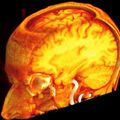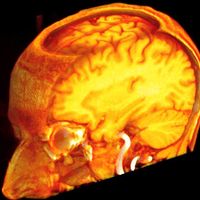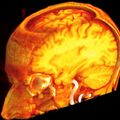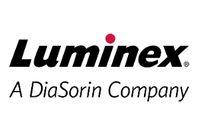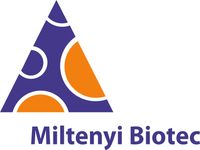President & CEO of StressMarq Biosciences Inc., a research reagent company with primary product lines in neurodegenerative diseases and cellular stress based in Victoria (BC), Canada. Successful Senior Scientific Business Executive with demonstrated expertise growing markets ...
See moreProgram Committee Share
-
Ariel Louwrier
-
S. Alex Marshall, PhD
Dr. Marshall is an Assistant Professor in the department of Biological and Biomedical Sciences at North Carolina Central University in Durham, NC. He was previously in the Basic Pharmaceutical Science Department in High Point University's Fred Wilson School of Pharmacy. He ...
See more -
Paul Mathews
Dr. Paul J. Mathews received his bachelors degree from the University of Oregon where he studied invertebrate behavioral plasticity in the lab of Dr. Nathan Tublitz. He received his Ph.D. in neuroscience from the University of Texas at Austin under the mentorship of Dr. Nace ...
See more -
James Gnadt, PhD
Dr. Jim Gnadt, NINDS Program Director in Systems and Computational Neuroscience and Team Lead for the NIH BRAIN Integrative and Quantitative Approaches, has worked in systems and cognitive neuroscience and neuroengineering for over 35 years. He has held his current position at ...
See more -
Grace C.Y. Peng, Ph.D.
Grace C.Y. Peng, Ph.D. is the Director of Mathematical Modeling, Simulation and Analysis at the National Institute of Biomedical Imaging and Bioengineering (NIBIB) within the National Institutes of Health (NIH) in the US Department of Health and Human Services (DHHS). In this ...
See more -
Hsiao Yu (Christina) Fang, PhD
Dr. Hsiao Yu (Christina) Fang is a Scientific Program Manager in the NINDS Systems and Cognitive Neuroscience Cluster. She earned her B.S. from National Tsing Hua University, and a Ph.D. in Genetics from the University of Cambridge. Under the guidance of Prof. Alfonso ...
See more -
Mohammad M. Ghassemi, PhD
Mohammad Ghassemi is an Assistant Professor of Computer Science and Engineering at Michigan State University (MSU). His domains of expertise include augmented intelligence, natural language processing, recommendation systems, and health informatics. Before joining MSU, he was a ...
See more -
Susan N. Wright, PhD
During her clinical postdoctoral fellowship at Maryland Psychiatric Research Center, University of Maryland School of Medicine, she studied white matter integrity, cognition, and aging in schizophrenic patients using various neuroimaging techniques, as well as imaging genetics ...
See more
Neuroscience Virtual Event Series 2021


Labroots is excited to present the 9th annual event in the Neuroscience Virtual Event Series. This distinguished, online-only, event is free to attend and will once again bring together the neuroscience community to discuss and present the newest advances in understanding the human brain, neuropsychiatric disorders, and behavioral processes as it relates to the brain function.
The tracks for this year's event include:
- Integrating Theories of the Brain
- Success Stories
- Data-Driven (AI) Approaches
- Theory-Driven (Mechanistic) Approaches
- Debate: Can we Generate an Organized Theory of the Brain? (For understanding cognition/memory, perception, behavior)
- Neurodegenerative Disorders - Impacts and Progress
- Mental Health in the Age of COVID-19
Call for Posters — Virtual poster sessions offer the opportunity to present data to a global audience via a PDF poster and video summary and discuss results with interested colleagues through email. Plan now to have your poster included in the Neuroscience 2021 Virtual Event. Submission is free. Submit your abstract here.
Our virtual conference allows you to participate in a global setting with no travel or cost to you. The event will remain open for 2 years from the date of the live event, and the webinars will be available for unlimited on-demand viewing. This virtual conference also offers increased reach for the global neuroscience community with a high degree of interaction through live-streaming video and chat sessions.
Continuing Education
Labroots is approved as a provider of continuing education programs in the clinical laboratory sciences by the ASCLS P.A.C.E. ® Program. By attending this event, you can earn 1 Continuing Education credit per presentation for a maximum of 40 credits.
Use #LRneuro to follow the conversation!

Agenda Share
-
A Novel Mouse Model of Ataxia Telangiectasia for Testing Small Molecule Readthrough (SMRT) Compounds
Paul Mathews, PhD
Investigator & Co-Director of the Neurotherapeutics IWI, Lundquist Institute (Formerly "LA BioMed"); Assistant Professor, David Geffen School of Medicine at UCLA Department of NeurologyBIOGRAPHY -
Mechanistic Insight into Tandem Repeat Expansions in Amyotrophic Lateral Sclerosis
Paul Valdmanis, PhD
-
Alpha-Synuclein Strains in Synucleinopathies
Wouter Peelaerts, PhD
Neuroscientist and Senior Post-Doctoral Fellow, FWO Flanders at KU LeuvenBIOGRAPHY -
AUG 25, 2021 10:30 AM PDT
A Novel Blood-Based Biomarker for Silent Cerebral Edema and Brain Vascular Injury
Jason D. Hinman, PhD, MD
-
AUG 25, 2021 1:30 PM PDT
Spatial Transcriptomics of Alzheimer's Disease Mouse Models with and Without Trem2R47H Mutation.
Frances Edwards, PhD
Professor of Neurodegeneration, Department of Neuroscience Physiology and Pharmacology, University College LondonBIOGRAPHYSponsored By: NanoString Technologies -
AUG 25, 2021 12:00 PM PDT
Debate Discussion: Can We Generate an Organizing Theory of the Brain?
Florian Engert, PhDProfessor of Molecular and Cellular Biology, Harvard Un...Mohammad M. Ghassemi, PhDNIH Data Scholar, Assistant Professor of Computer Scien...David Kleinfeld, PhDDr. George Feher Endowed Chair in Experimental Biophysi... -
AUG 25, 2021 10:30 AM PDT
Methods for Culturing Primary Adult CNS Neurons
Erna van Niekerk, Ph.D.
Department of Neuroscience, Center for Neural Repair University of California - San DiegoBIOGRAPHYSponsored By: Miltenyi Biotec -
AUG 25, 2021 9:00 AM PDT
Keynote Presentations: Current and Future Directions of the NIH BRAIN Initiative
Susan Wright, PhDProgram Director for Big Data and Computational Science...James Gnadt, PhDProgram Director, Systems and Cognitive Neuroscience, N...Hsiao Yu (Christina) Fang, PhDScientific Program Manager in the NINDS Systems and Cog...Grace Peng, PhDDirector of Mathematical Modeling, Simulation and Analy...Mohammad M. Ghassemi, PhDNIH Data Scholar, Assistant Professor of Computer Scien...John J. Ngai, PhDDirector, NIH BRAIN Initiative -
Can Deep Learning Produce a General Model of Natural Sound Encoding by Auditory Cortex?
Stephen V. David, Ph.D.
Associate Professor, Oregon Hearing Research Center, Oregon Health and Science UniversityBIOGRAPHY -
Can Multiscale Computer Modeling Save the Human Genome Project?: Climbing the Omes for Schizophrenia
William Lytton, MD
SUNY Distinguished Professor, SUNY Downstate Health Sciences UniversityBIOGRAPHY -
Cortical Chimera States Predict Epileptic Seizures
Terrence J Sejnowski, PhD
Francis Crick Professor, The Salk Institute for Biological Studies; Distinguished Professor of Biology and Computer Science and Engineering, University of California, San DiegoBIOGRAPHY -
Dimensions of variability in circuit models of cortex
-
Machine Learning Approaches to Characterizing and Interpreting Brain-wide Dynamics
Shella Keilholz, Ph.D.
Professor, Emory University/Georgia Tech Biomedical Engineering DepartmentBIOGRAPHY -
Mechanistic Models of Cognition: from Perception to Navigation to Semantic Development
Surya Ganguli, PhD
Associate Professor, Department of Applied Physics, Stanford UniversityBIOGRAPHY -
Mine Your Own View: A New Self-Supervised Learning Approach for Building Stable Representations of Neural Activity
Eva L. Dyer, PhD
Assistant Professor of Biomedical Engineering, Georgia Institute of Technology; Emory UniversityBIOGRAPHY -
Orchestrating the Brain for Social Behavior
Richard Tsien, PhD
Chair, Neuroscience and Physiology; Director, Neuroscience Institute; NYU Langone Health; NYU Grossman School of MedicineBIOGRAPHY -
Positive Psychology and Well-Being for Clinicians and Consumers: Addressing Burnout, Compassion Fatigue and Secondary Trauma in the COVID-19 Era
Dorit Saberi, PhD
Supervising Clinical Psychologist, Harbor UCLA Medical Center, Clinical Director- SAFE HARBOR Trauma Recovery Center; Associate Professor, UCLA- David Geffen School of MedicineBIOGRAPHY -
-
Sequences and Modularity of Dynamic Attractors in Inhibition-Dominated Neural Networks
Carina Curto
Professor and Co-Associate Head of Graduate Studies, Department of Mathematics Pennsylvania State UniversityBIOGRAPHY
- Neurodegenerative Disorders - Impacts and Progress
-
Alpha-Synuclein Strains in Synucleinopathies
Wouter Peelaerts, PhD
Neuroscientist and Senior Post-Doctoral Fellow, FWO Flanders at KU LeuvenBIOGRAPHY -
A Novel Mouse Model of Ataxia Telangiectasia for Testing Small Molecule Readthrough (SMRT) Compounds
Paul Mathews, PhD
Investigator & Co-Director of the Neurotherapeutics IWI, Lundquist Institute (Formerly "LA BioMed"); Assistant Professor, David Geffen School of Medicine at UCLA Department of NeurologyBIOGRAPHY -
Mechanistic Insight into Tandem Repeat Expansions in Amyotrophic Lateral Sclerosis
Paul Valdmanis, PhD
-
AUG 25, 2021 10:30 AM PDT
A Novel Blood-Based Biomarker for Silent Cerebral Edema and Brain Vascular Injury
Jason D. Hinman, PhD, MD
-
AUG 25, 2021 1:30 PM PDT
Spatial Transcriptomics of Alzheimer's Disease Mouse Models with and Without Trem2R47H Mutation.
Frances Edwards, PhD
Professor of Neurodegeneration, Department of Neuroscience Physiology and Pharmacology, University College LondonBIOGRAPHYSponsored By: NanoString Technologies - Integrating Theories of the Brain
- Success Stories
-
Orchestrating the Brain for Social Behavior
Richard Tsien, PhD
Chair, Neuroscience and Physiology; Director, Neuroscience Institute; NYU Langone Health; NYU Grossman School of MedicineBIOGRAPHY -
Cortical Chimera States Predict Epileptic Seizures
Terrence J Sejnowski, PhD
Francis Crick Professor, The Salk Institute for Biological Studies; Distinguished Professor of Biology and Computer Science and Engineering, University of California, San DiegoBIOGRAPHY -
Dimensions of variability in circuit models of cortex
- Theory-driven (Mechanistic) Approaches
-
Mechanistic Models of Cognition: from Perception to Navigation to Semantic Development
Surya Ganguli, PhD
Associate Professor, Department of Applied Physics, Stanford UniversityBIOGRAPHY -
Sequences and Modularity of Dynamic Attractors in Inhibition-Dominated Neural Networks
Carina Curto
Professor and Co-Associate Head of Graduate Studies, Department of Mathematics Pennsylvania State UniversityBIOGRAPHY -
Can Multiscale Computer Modeling Save the Human Genome Project?: Climbing the Omes for Schizophrenia
William Lytton, MD
SUNY Distinguished Professor, SUNY Downstate Health Sciences UniversityBIOGRAPHY - Data-Driven (AI) Approaches
-
Mine Your Own View: A New Self-Supervised Learning Approach for Building Stable Representations of Neural Activity
Eva L. Dyer, PhD
Assistant Professor of Biomedical Engineering, Georgia Institute of Technology; Emory UniversityBIOGRAPHY -
Machine Learning Approaches to Characterizing and Interpreting Brain-wide Dynamics
Shella Keilholz, Ph.D.
Professor, Emory University/Georgia Tech Biomedical Engineering DepartmentBIOGRAPHY -
Can Deep Learning Produce a General Model of Natural Sound Encoding by Auditory Cortex?
Stephen V. David, Ph.D.
Associate Professor, Oregon Hearing Research Center, Oregon Health and Science UniversityBIOGRAPHY -
AUG 25, 2021 9:00 AM PDT
Keynote Presentations: Current and Future Directions of the NIH BRAIN Initiative
Susan Wright, PhDProgram Director for Big Data and Computational Science...James Gnadt, PhDProgram Director, Systems and Cognitive Neuroscience, N...Hsiao Yu (Christina) Fang, PhDScientific Program Manager in the NINDS Systems and Cog...Grace Peng, PhDDirector of Mathematical Modeling, Simulation and Analy...Mohammad M. Ghassemi, PhDNIH Data Scholar, Assistant Professor of Computer Scien...John J. Ngai, PhDDirector, NIH BRAIN Initiative -
AUG 25, 2021 10:30 AM PDT
Methods for Culturing Primary Adult CNS Neurons
Erna van Niekerk, Ph.D.
Department of Neuroscience, Center for Neural Repair University of California - San DiegoBIOGRAPHYSponsored By: Miltenyi Biotec -
AUG 25, 2021 12:00 PM PDT
Debate Discussion: Can We Generate an Organizing Theory of the Brain?
Florian Engert, PhDProfessor of Molecular and Cellular Biology, Harvard Un...Mohammad M. Ghassemi, PhDNIH Data Scholar, Assistant Professor of Computer Scien...David Kleinfeld, PhDDr. George Feher Endowed Chair in Experimental Biophysi... - Mental Health in the Age of COVID-19
-
-
Positive Psychology and Well-Being for Clinicians and Consumers: Addressing Burnout, Compassion Fatigue and Secondary Trauma in the COVID-19 Era
Dorit Saberi, PhD
Supervising Clinical Psychologist, Harbor UCLA Medical Center, Clinical Director- SAFE HARBOR Trauma Recovery Center; Associate Professor, UCLA- David Geffen School of MedicineBIOGRAPHY
Speakers Share
-
Jeroen Aerts, PhD
Customer Technology Advisor at Resolve Biosciences
BIOGRAPHY
-
David Carlson, PhD
Associate Professor, Duke University
BIOGRAPHY
-
Carina Curto
Professor and Co-Associate Head of Graduate Studies, Department of Mathematics Pennsylvania State University
BIOGRAPHY
-
Stephen V. David, Ph.D.
Associate Professor, Oregon Hearing Research Center, Oregon Health and Science University
BIOGRAPHY
-
Brent Doiron, PhD
Professor of Neurobiology and Statistics, University of Chicago
BIOGRAPHY
-
Andrii Domanskyi, PhD
Senior Research Scientist, Orion Pharma
BIOGRAPHY
-
Eva L. Dyer, PhD
Assistant Professor of Biomedical Engineering, Georgia Institute of Technology; Emory University
BIOGRAPHY
-
Frances Edwards, PhD
Professor of Neurodegeneration, Department of Neuroscience Physiology and Pharmacology, University College London
BIOGRAPHY
-
Florian Engert, PhD
Professor of Molecular and Cellular Biology, Harvard University
BIOGRAPHY
-
Hsiao Yu (Christina) Fang, PhD
Scientific Program Manager in the NINDS Systems and Cognitive Neuroscience Cluster
BIOGRAPHY
-
Surya Ganguli, PhD
Associate Professor, Department of Applied Physics, Stanford University
BIOGRAPHY
-
Mohammad M. Ghassemi, PhD
NIH Data Scholar, Assistant Professor of Computer Science and Engineering at Michigan State University (MSU)
BIOGRAPHY
-
James Gnadt, PhD
Program Director, Systems and Cognitive Neuroscience, National Institute of Neurological Disorders and Stroke
BIOGRAPHY
-
Kati Healey, MA, PhD
Postdoctoral Associate, Duke University
BIOGRAPHY
-
Jason D. Hinman, PhD, MD
Associate Professor, Vice Chair of Research, Department of Neurology, David Geffen School of Medicine, UCLA
BIOGRAPHY
-
Shella Keilholz, Ph.D.
Professor, Emory University/Georgia Tech Biomedical Engineering Department
BIOGRAPHY
-
David Kleinfeld, PhD
Dr. George Feher Endowed Chair in Experimental Biophysics, Distinguished Professor, UC San Diego
BIOGRAPHY
-
William Lytton, MD
SUNY Distinguished Professor, SUNY Downstate Health Sciences University
BIOGRAPHY
-
Paul Mathews, PhD
Investigator & Co-Director of the Neurotherapeutics IWI, Lundquist Institute (Formerly "LA BioMed"); Assistant Professor, David Geffen School of Medicine at UCLA Department of Neurology
BIOGRAPHY
-
Jacob McPhail, PhD
R&D Scientist, StressMarq Biosciences Inc.
BIOGRAPHY
-
Ilya Nemenman
Professor of Physics and Biology, Emory University
BIOGRAPHY
-
John J. Ngai, PhD
Director, NIH BRAIN Initiative
BIOGRAPHY
-
Wouter Peelaerts, PhD
Neuroscientist and Senior Post-Doctoral Fellow, FWO Flanders at KU Leuven
BIOGRAPHY
-
Grace Peng, PhD
Director of Mathematical Modeling, Simulation and Analysis, National Institute of Biomedical Imaging and Bioengineering, National Institutes of Health
BIOGRAPHY
-
Xaq Pitkow, Ph.D.
Associate Professor, Rice University
BIOGRAPHY
-
Dorit Saberi, PhD
Supervising Clinical Psychologist, Harbor UCLA Medical Center, Clinical Director- SAFE HARBOR Trauma Recovery Center; Associate Professor, UCLA- David Geffen School of Medicine
BIOGRAPHY
-
Terrence J Sejnowski, PhD
Francis Crick Professor, The Salk Institute for Biological Studies; Distinguished Professor of Biology and Computer Science and Engineering, University of California, San Diego
BIOGRAPHY
-
Eric Song, MD
PhD Candidate
BIOGRAPHY
-
Gergely Tóth, PhD, MBA
CEO and CSO, Cantabio Pharmaceuticals Inc.
BIOGRAPHY
-
Richard Tsien, PhD
Chair, Neuroscience and Physiology; Director, Neuroscience Institute; NYU Langone Health; NYU Grossman School of Medicine
BIOGRAPHY
-
Paul Valdmanis, PhD
Assistant Professor, Division of Medical Genetics, Department of Medicine University of Washington
BIOGRAPHY
-
Erna van Niekerk, Ph.D.
Department of Neuroscience, Center for Neural Repair University of California - San Diego
BIOGRAPHY
-
Susan Wright, PhD
Program Director for Big Data and Computational Science, National Institute on Drug Abuse (NIDA), Division of Neuroscience and Behavior (DNB)
BIOGRAPHY
-
Luminex - A DiaSorin Company
At Luminex, our mission is to empower labs to obtain reliable, timely, and actionable answers, ultimately advancing health. We offer a wide range of solutions applicable in diverse markets including clinical diagnostics, pharmaceutical drug discovery, biomedical research, genomic ...
See more -
Envigo
Envigo provides the broadest range of research models and related services to the pharmaceutical and biotechnology industries, government, academia, and other life science organizations. As the largest organization that is solely dedicated to providing research models and related ...
See more -
NanoString Technologies
NanoString Technologies (NASDAQ: NSTG) is a publicly held provider of life science tools for translational research and molecular diagnostics. The company's technology enables a wide variety of basic research, translational medicine and in vitro diagnostics applications ...
See more -
Atlas Antibodies
Atlas Antibodies is a Swedish biotechnology company driving leading research worldwide through providing affinity-purified monoclonal and polyclonal antibodies, and control antigens. Our product portfolio extensively covers human proteins in cells, tissues, and organs. With our ...
See more -
OriGene
OriGene Technologies was founded as a research tool company focused on the creation of the large commercial collection of full-length human cDNAs in a standard expression vector. The availability of the complete human genome sequence and the subsequent development of genome-based ...
See more -
Asuragen
Asuragen is a molecular diagnostic product company changing the way patients are treated in genetics and oncology. Asuragen's diagnostic systems, composed of proprietary chemistry and software, deliver powerful answers using broadly installed instrument platforms. They are simple ...
See more -
Miltenyi Biotec
For over 30 years, Miltenyi Biotec has been a leader in the development of products that empower the advancement of biomedical research and enable cell and gene therapy. We provide innovative tools to help with your sample preparation, cell isolation, cell culture, and cell ...
See more -
Resolve Biosciences
Resolve Biosciences is applying the power of Molecular Cartography to enable scientists to gain new insights based on the highest-resolution view of single-cell spatial biology. The platform features the company's proprietary, multiplexed, single-molecule detection technology ...
See more -
Sartorius
The Sartorius Group is a leading international partner of biopharmaceutical research and the industry. With innovative laboratory instruments and consumables, the Group's Lab Products & Services Division concentrates on serving the needs of laboratories performing research and ...
See more -
StressMarq Biosciences
StressMarq Biosciences is a life sciences company with a diverse portfolio of primary antibodies, proteins, immunoassay kits and small molecules for scientific research in areas including cancer research, cardiovascular disease, cell signaling and neuroscience. StressMarq has ...
See more
Event Series

Neuroscience Virtual Event Series 2026

Neuroscience Virtual Event Series 2025

Neuroscience Virtual Event Series 2024

Neuroscience Virtual Event Series 2023

Neuroscience Virtual Event Series 2022

Laboratory Animal Sciences Virtual Event Series 2021

Laboratory Animal Sciences Virtual Event Series 2020

Neuroscience Virtual Event Series 2020

Neuroscience Virtual Event Series 2019

Laboratory Animal Sciences Virtual Event Series 2019

Neuroscience Virtual Event Series 2018

Laboratory Animal Sciences Virtual Event Series 2018

Neuroscience Virtual Event Series 2017

Laboratory Animal Sciences Virtual Event Series 2017

Neuroscience Virtual Event Series 2016

Laboratory Animal Sciences Virtual Event Series 2016

Neuroscience Virtual Event Series 2015

Laboratory Animal Sciences Virtual Event Series 2015

Neuroscience Virtual Event Series 2014


































